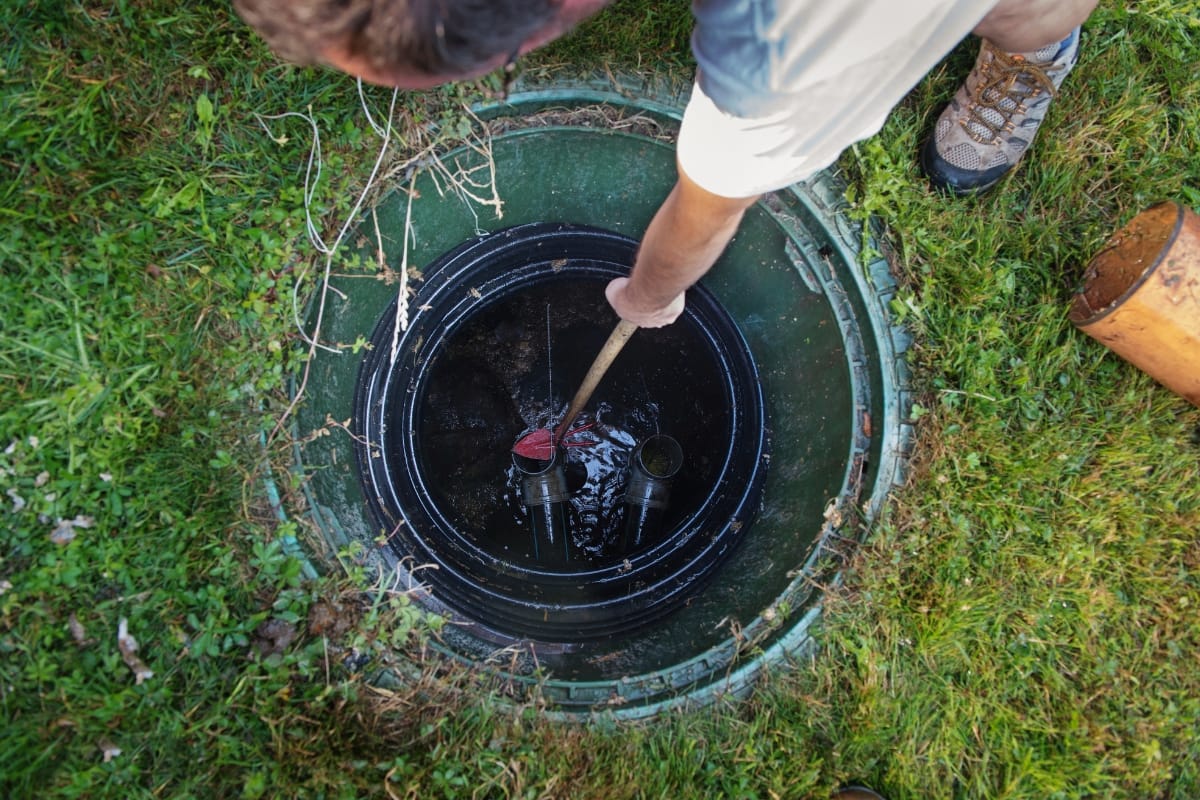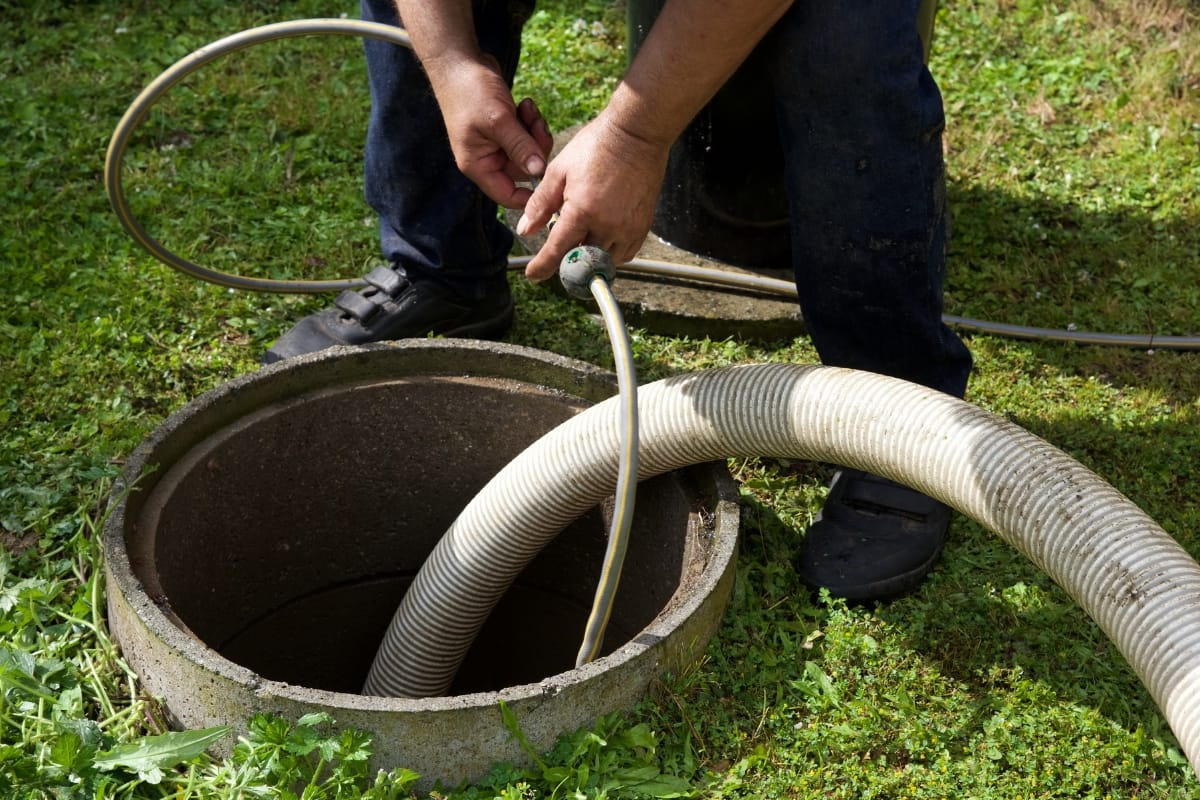Septic systems play a crucial role in managing wastewater, and their proper functioning is essential for protecting groundwater and drinking water quality. At Smart Septic Pros, we specialize in septic tank installation, maintenance, and understanding the significance of septic drain fields.
With years of experience, we help ensure that your system operates efficiently and safely. It’s vital to recognize how septic systems can impact the environment and personal health.
By maintaining your septic system effectively, you can help prevent potential issues like groundwater contamination. Keep reading to learn more about how septic systems influence water quality and what you can do to protect your home and community.
Septic Systems and Their Role in Groundwater Quality Explained
Understanding Septic Systems and Their Role

Septic systems play a vital role in managing wastewater and protecting groundwater quality. At the heart of these systems is a simple but effective process that treats sewage before it reaches the environment.
What Is a Septic System?
A septic system is an underground setup that treats wastewater from homes and businesses. By allowing solids to settle and clear liquids to flow into the septic drain fields, it helps maintain groundwater flow and protects the surrounding ecosystem.
This process becomes increasingly important as factors like sea level rise can impact water quality, making proper septic tank maintenance essential for healthy lawns and safe drinking water.
Key Components of a Septic System
A typical septic system consists of key components such as the septic tank, which collects wastewater and allows solids to settle into sludge. The liquid effluent then flows out to the septic drain fields, where it is further treated by soil and filtered back into the groundwater.
Rainfall and precipitation can influence this discharge, potentially introducing phosphorus into the surrounding ecosystem, which raises the risk of environmental hazards if not properly managed.
Understanding how these components work together helps illustrate the importance of septic tank maintenance, including pumping the tank to prevent system failures that could contaminate drinking water sources.
| Component | Function | Risk Factors |
|---|---|---|
| Septic Tank | Holds and treats wastewater | Hazard from solids buildup |
| Drain Field | Discharges treated liquids | Potential contamination from precipitation |
| Soil | Filters effluent back to groundwater | Risk of phosphorus loading |
How Septic Systems Function
Septic systems primarily function through a well-coordinated process that ensures effective wastewater treatment.
The solid waste settles at the bottom of the septic tank while the liquid effluent moves forward to the septic drain fields, where the surrounding soil further breaks down harmful substances.
Rain or flood conditions can influence this entire system, sometimes overwhelming it and increasing the risk of corrosion in the components.
Understanding the steps of this process highlights its significance for preserving local water quality:
- Wastewater enters the septic tank.
- Solid waste settles to form sludge.
- Liquid effluent flows into the drain field.
- Soil filters the effluent before it reaches the groundwater.
- Water eventually blends into nearby lakes and rivers.
Septic systems play a crucial part in managing waste, but their influence doesn’t stop there. Let’s dive into how these systems can affect the quality of our groundwater.
The Impact of Septic Systems on Groundwater Quality

Septic systems can significantly affect groundwater quality, and it’s essential to understand how contaminants can seep through these septic drain fields. When waste breaks down in the septic tank, various harmful substances may be released, especially during heavy rain or snow melt.
If the tank is not maintained, contaminants can find their way into the groundwater, creating pathways that lead to potential issues for drinking water. Increased nutrient levels, such as nitrogen and phosphorus, can spark algae growth, further complicating water purity.
The concrete structures of septic systems, while sturdy, can crack over time, allowing even more contaminants to escape. Overall, these factors highlight the importance of regular septic tank maintenance to safeguard local water resources.
Contaminants Released From Septic Systems
Septic systems can release various contaminants into the groundwater, particularly bacteria and nutrients like nitrogen and phosphorus. These harmful substances can dramatically impact water quality, especially along the coast where freshwater meets saltwater.
Factors such as climate change and heavy rainfall can exacerbate these risks, overwhelming sewage treatment processes and increasing the potential for contamination in drinking water supplies.
In essence, understanding the potential contaminants released from septic systems is crucial to addressing water safety:
| Contaminant | Source | Impact on Water Quality |
|---|---|---|
| Bacteria | Breakdown of waste | Can harm human health, causing illnesses |
| Nitrogen | Fertilizers and waste | Contributes to algae blooms, depleting oxygen |
| Phosphorus | Sewage and runoff | Leads to increased nutrient loading in water bodies |
Pathways of Contaminants Into Groundwater
Contaminants can make their way into groundwater through various pathways, largely influenced by factors like soil type and rainfall.
Nutrient pollution, particularly from excess nitrogen and phosphorus, travels through the soil and reaches the water table, negatively affecting drinking water quality. Pathogens can also seep through these barriers, increasing the risk of water pollution that poses health risks to local communities.
Effects of Contaminants on Groundwater Quality
Contaminants from septic systems can severely affect groundwater quality, potentially jeopardizing the local water supply. When these harmful substances seep through layers of sand and soil, they can reach underground aquifers, which are essential for providing clean drinking water.
Additionally, as pollutants interact with the atmosphere, they may lead to further degradation of water sources, making regular maintenance of sewerage systems vital for community health.
By understanding how septic systems affect groundwater, homeowners can take proactive steps to safeguard their water quality. Proper maintenance not only ensures efficiency but also protects the environment, paving the way for a healthier community.
Septic System Maintenance and Groundwater Protection

Regular septic system maintenance is crucial for ensuring the health of both groundwater and the broader community. Neglecting a septic tank can lead to leaks, which not only affect the system’s functionality but also pose risks to public health.
Research shows that untreated wastewater can release nitrates and other harmful substances into the ground, compromising drinking water quality. By implementing effective maintenance practices—like routine inspections and prompt pumping—homeowners can significantly reduce the chances of contamination.
This proactive approach helps to preserve water resources while safeguarding the wellbeing of everyone relying on that water for daily use.
Importance of Regular Septic System Maintenance
Regular septic system maintenance is essential for preventing groundwater pollution caused by untreated waste.
A well-maintained septic system reduces the risk of harmful substances, such as fertilizer runoff or residual medication, from contaminating drinking water supplies. By managing these risks, communities can protect themselves from potential diseases linked to polluted water sources.
To illustrate the effects of proper maintenance on groundwater and public health, consider the following table:
| Aspect | Positive Outcome | Negative Outcome Without Maintenance |
|---|---|---|
| Waste Management | Reduces risks of groundwater pollution | Increases chances of contamination |
| Fertilizer Control | Minimizes harmful nutrient runoff | Excess nutrients contribute to water quality issues |
| Medication Residue | Limits entry to aquifers | Potential health risks from waterborne diseases |
Effective Septic System Maintenance Practices
Effective maintenance of septic systems is vital for maintaining high water quality and protecting both groundwater and surface water. Regular pumping of the septic tank helps manage the concentration of solids and prevents harmful substances from entering the environment.
Additionally, ensuring adequate oxygen levels within the system can enhance wastewater treatment processes and reduce the risk of contamination.
Impact of Maintenance on Reducing Groundwater Contamination
Regular maintenance of a septic tank plays a key role in minimizing groundwater contamination. By ensuring that the system functions properly, homeowners can significantly reduce the risk of pollutants, such as nitrogen, from entering the water supply.
Climate change often leads to increased rainfall and flooding, which can overwhelm septic systems; effective maintenance helps to counteract these challenges and ensure proper filtration of wastewater.
| Maintenance Aspect | Impact on Groundwater | Pollutants Reduced |
|---|---|---|
| Routine Inspections | Identifies potential system failures | Nitrogen and bacteria |
| Pumping | Reduces solid buildup | Fats and oils |
| Repairing Leaks | Prevents untreated waste from escaping | Various pollutants |
Maintaining your septic system is essential for protecting groundwater, but what happens when things go wrong? The unseen dangers could threaten your drinking water, making it vital to stay informed about the risks involved.
Septic Systems and the Risk of Drinking Water Contamination

Understanding the interconnection between septic systems and drinking water is crucial for safeguarding water resources. Improperly maintained septic systems can be a significant source of contaminants affecting drinking water supplies and nearby ecosystems.
Microbes, nitrates, and other pollutants can seep into groundwater, potentially compromising quality. Factors such as agriculture practices, landfill proximity, and construction activities can exacerbate these risks.
Additionally, aging pipes may leak or break, allowing harmful substances to enter drinking water sources. Discussing these connections helps to identify potential threats and highlights effective strategies for minimizing the risk of contamination, ultimately protecting community health.
The Link Between Septic Systems and Drinking Water Sources
Septic systems play a crucial role in maintaining sanitation within residential and commercial landscapes. However, if not properly managed, they can introduce various nutrients and pollutants, including oil, into nearby water sources.
This contamination can significantly affect the quality of drinking water by altering the balance of beneficial elements and promoting the growth of harmful microorganisms.
Common Contaminants of Drinking Water From Septic Systems
Septic systems can lead to various contaminants entering the drinking water supply, posing risks to public health and the environment.
Common issues include the presence of nitrates and pathogens, which can compromise water quality and create serious health concerns for communities.
Environmental science highlights the need for regular maintenance and proper management of septic systems to minimize contamination and protect vital drinking water sources.
Minimizing the Risk of Drinking Water Contamination
To minimize the risk of drinking water contamination, regular septic system assessments and timely repairs are essential. Homeowners should prioritize ensuring that their systems are functioning correctly and are free from leaks or breakdowns.
Staying informed about local environmental practices and adopting proper waste disposal methods can also contribute to safeguarding the quality of drinking water in their communities.
Contamination poses a serious threat, but there’s a growing concern that needs attention: nitrogen pollution. Tackling this issue is essential for protecting both our environment and our water quality.
Addressing Nitrogen Pollution From Septic Systems

Nitrogen plays a significant role in septic systems, largely participating in the nitrogen cycle that helps manage waste. However, when these systems are not well-maintained, excessive nitrogen can seep into groundwater, leading to pollution that negatively impacts drinking water quality.
High levels of nitrogen contribute to harmful algal blooms and can deplete oxygen in water bodies, posing risks to human health and aquatic life.
To tackle this issue, it’s vital to look at effective strategies that minimize nitrogen output from septic systems. These strategies can help homeowners better manage their systems, protect local water sources, and ensure cleaner drinking water for communities.
Nitrogen Cycle in Septic Systems
The nitrogen cycle in septic systems involves a series of processes that transform nitrogen compounds as waste breaks down. Initially, nitrogen from human waste enters the system in various forms. Beneficial bacteria then convert these nitrogen compounds into different states, potentially reducing the excess and limiting its impact on groundwater quality.
Understanding this cycle is key to addressing nitrogen pollution and its consequences for local ecosystems. Homeowners can play an active role by maintaining their septic systems and promoting effective nitrogen conversion. Proper management helps control nitrogen levels, benefitting both the groundwater and surrounding environments:
- Nitrogen enters septic systems through waste.
- Bacteria break down waste and convert nitrogen compounds.
- Excess nitrogen can harm groundwater if not managed.
- Regular maintenance helps control nitrogen output.
Impact of Nitrogen on Groundwater and Drinking Water
Nitrogen pollution poses a significant concern for both groundwater and drinking water quality. When excess nitrogen seeps into the soil, it can lead to elevated nitrate levels, which may contaminate local water supplies.
This elevated nitrate presence can result in serious health risks, particularly for vulnerable populations like infants, who may experience conditions such as methemoglobinemia, commonly known as “blue baby syndrome.”
Strategies for Reducing Nitrogen Output From Septic Systems
To effectively reduce nitrogen output from septic systems, homeowners can adopt several practical strategies.
Regularly pumping the septic tank ensures that solids do not accumulate, which helps minimize nitrogen release into the environment. Additionally, using low-nitrogen fertilizers in landscaping and gardening reduces the overall nitrogen input into the septic system and surrounding soil:
| Strategy | Description | Impact on Nitrogen Output |
|---|---|---|
| Routine Pumping | Regularly remove solids from the tank | Decreases potential nitrogen release |
| Low-Nitrogen Fertilizers | Choose fertilizers with reduced nitrogen levels | Limits excess nitrogen entering the system |
| Education | Inform the community on septic maintenance | Encourages safe practices reducing nitrogen pollution |
Implementing these strategies allows homeowners to contribute to securing cleaner groundwater and drinking water quality. By actively managing their septic systems, they play a crucial role in protecting local ecosystems from nitrogen pollution.
As concerns about nitrogen pollution grow, innovative solutions are on the horizon. Exciting advancements in septic system designs are paving the way for a cleaner, more efficient future.
Technology Advancements in Septic System Designs

Recent developments in septic system technologies are making waves in how we manage wastewater while protecting groundwater and drinking water quality. These innovations focus on improving efficiency and minimizing environmental impact, offering users more effective ways to treat and dispose of waste.
Advanced septic systems come with benefits that contribute to cleaner water sources, reducing the risk of contamination. More homeowners and businesses are recognizing the value of adopting modern septic solutions that not only benefit their property but also play a crucial role in enhancing the safety and sustainability of local water supplies.
With the right implementation, these cutting-edge designs can significantly boost overall water quality while ensuring responsible and effective waste management.
Innovations in Septic System Technologies
Innovations in septic system technologies are changing the landscape of wastewater management. New designs incorporate advanced filtration systems and aerobic treatment processes, which improve the breakdown of waste and reduce harmful emissions.
By adopting these cutting-edge solutions, homeowners and businesses can enhance the efficiency of their septic systems, leading to cleaner groundwater and safer drinking water in the community.
Benefits of Advanced Septic Systems for Water Quality
Advanced septic systems offer significant improvements in wastewater management, leading to enhanced water quality in local environments.
They incorporate technologies like aerobic treatment and advanced filtration, which break down waste more effectively and minimize the release of pollutants.
Conclusion
Maintaining a well-functioning septic system is crucial not only for your property but for the quality of groundwater and local drinking water sources. A properly managed septic system prevents contaminants from seeping into the groundwater, protecting the health of your family and community.
Partnering with professionals who understand the impact of septic systems on the environment ensures effective waste management and long-term protection of water quality. For expert septic services you can trust, reach out to Smart Septic Pros. Contact us at 678-993-4545 or book a septic service with us and take a proactive step toward safeguarding local water quality.



